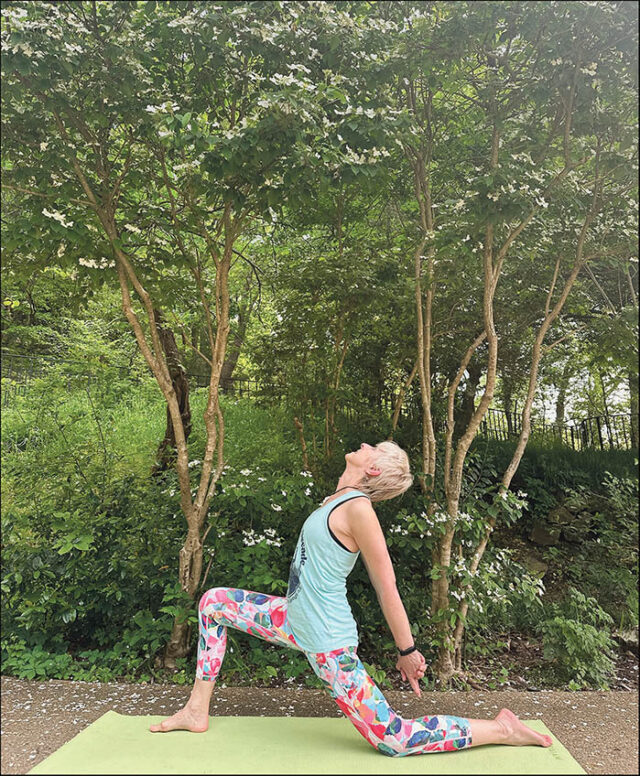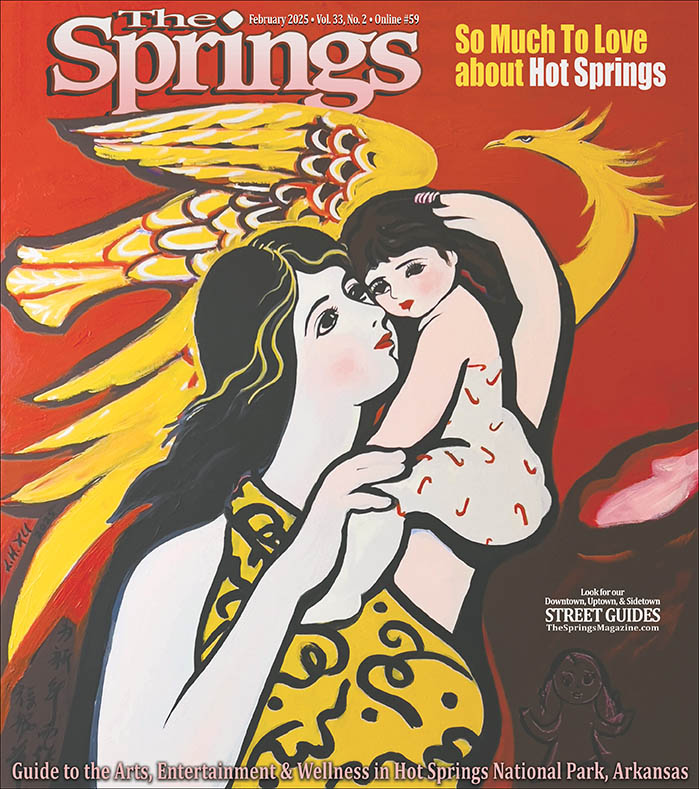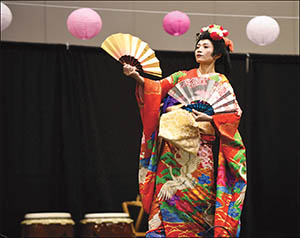Karen Watson Reeves demonstrates Low Lunge Backbend Pose while enjoying the beauty of spring in Hot Springs National Park. Photo by Fred Padilla.
By Karen Watson Reeves
We all know the adage, “April showers bring May flowers,” and if you have been out and about at all you have seen evidence of the earth blooming in the Spa City! Specifically, I have seen an abundance of azaleas, peonies, irises, trees showing off a multitude of colors, and the greening of the grass, shrubs, and trees. Spring has definitely sprung. New growth and transformation have occurred and along with that, the warm sunshine helps create enhanced energy.
It is not hyperbole to say that every yoga posture brings about transformation in some aspect of body/mind/soul. But there are some specific benefits to taking a backbend from the low lunge position. Legs, knees, and ankles are strengthened. Abdominal organs are stimulated; hip flexors are stretched; lower back pain can be minimized. Backbends are especially energizing for the entire body.
Spring often represents a time of deep cleaning, new beginnings, out with the old/in with the new, growth, and transformation. Take stock of what is going on in your body and in your life. What should you keep and what do you need to let go? Meditation and observation can be helpful tools in deciding, as can practicing yoga regularly.
Our season of spring is usually short-lived, so don’t forget to notice the changes around you! Enjoy the beauty of the season.
Karen Watson Reeves has called Hot Springs home since 2006. Owner of The Yoga Place, at 301 Whittington Avenue, she became a registered yoga/children’s yoga teacher in 2011. When not on the mat, Karen enjoys the beautiful outdoors of the National Park, especially from her bicycle. Find more information about her studio and her schedule of classes at www.theyogaplacehs.com.









